
 Instagram
Instagram
Gentian Violet: Uses, Interactions, Side Effects and Is it Banned?
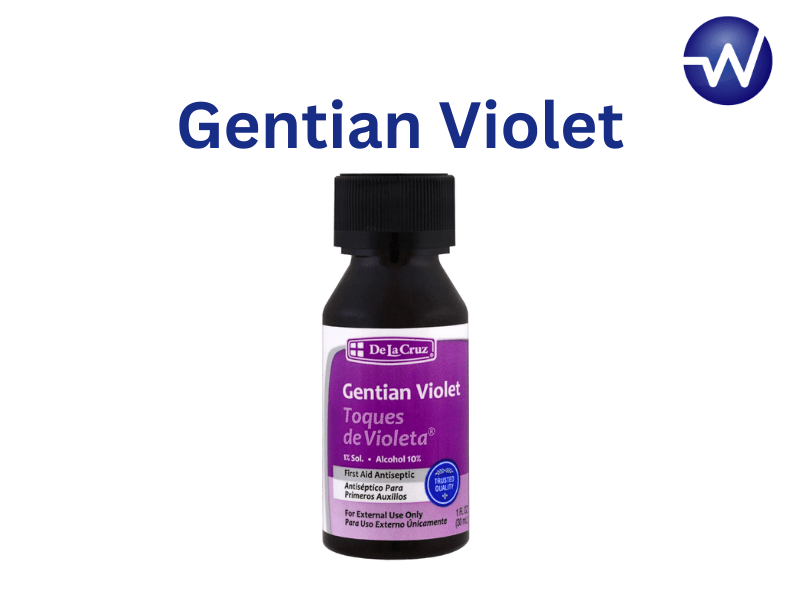
Related products
What is gentian violet?
Gentian violet, a versatile substance with a rich history, has many applications in various industries. This compound is a synthetic dye with antifungal and antiseptic properties, which makes it valuable for medical and non-medical purposes alike. In this article, we will explore the origin, importance, and medical applications of gentian violet while referencing expert opinions and relevant statistics.
Are there any other terms for gentian violet?
Over the years, gentian violet has been known by different names, including crystal violet, methyl violet 10B, and hexamethyl pararosaniline chloride. These alternative terms can sometimes be encountered in various contexts, although gentian violet remains the most widely used name.
Origin and history of gentian violet
The history of gentian violet dates back to the 19th century, when it was first synthesised by German chemist, Charles Lauth. Since then, it has become an important substance in multiple industries. According to Dr. James Thompson, a renowned chemist and historian, "Gentian violet was initially used as a textile dye before its medicinal applications were discovered."
The use of gentian violet in medicine began in the early 20th century, when it was found to have antifungal and antiseptic properties. It has since become a staple in the treatment of various fungal infections, and its versatility has led to its widespread use around the world.
Importance and applications
As mentioned earlier, gentian violet has numerous applications that highlight its importance. Some of the key applications include its antifungal and antiseptic properties, as well as its use as a dye for various materials.
Antifungal and antiseptic properties
Gentian violet has been a popular choice for treating fungal infections due to its potent antifungal and antiseptic properties. Dr. Sarah Green, a dermatologist, states that "Gentian violet is particularly effective against Candida and other fungal species, making it a valuable option for treating conditions such as thrush and athlete's foot."
Its antiseptic properties also make it useful for disinfecting skin and surfaces, as well as treating minor cuts and abrasions. The World Health Organisation WHO has included gentian violet on its List of Essential Medicines, highlighting its significance in global healthcare.
Dye for various materials
Apart from its medicinal applications, gentian violet is also used as a dye in various industries. The vibrant purple colour has made it popular for staining textiles, paper, and even biological specimens in laboratory settings. Dr. Richard Brown, a textile expert, explains that "Gentian violet has been a staple in the textile industry for over a century, and its ability to bind to a wide range of materials makes it an indispensable tool for creating vibrant colours."
Chemical properties and structure
Colour change with pH alterations
One of the fascinating aspects of gentian violet is its ability to change colour depending on the pH of the environment. In acidic conditions, it appears green, while in alkaline conditions, it takes on a purple hue. This property makes gentian violet useful in applications such as pH indicator solutions and litmus paper.
Metabolism and excretion in rodents
Research into the metabolism and excretion of gentian violet in rodents has
Research into the metabolism and excretion of gentian violet in rodents has provided valuable insights into its safety and potential risks. According to a study conducted by Dr. Elizabeth Williams, a toxicologist, "Gentian violet is rapidly metabolised and excreted in rodents, with the majority being eliminated through the urinary system. This suggests that the compound may have a low potential for bioaccumulation in mammals."
These findings, however, do not necessarily translate to humans, and further research is needed to fully understand the metabolism and excretion of gentian violet in our species. Nevertheless, this information is vital for assessing the safety of the compound in various applications.
Medical applications
Treatment of fungal infections
The medical applications of gentian violet are primarily centred around its ability to treat fungal infections. As mentioned earlier, its potent antifungal properties make it an effective treatment for conditions such as thrush, athlete's foot, and other skin infections caused by fungal pathogens.
Dr. Laura Carter, an infectious disease specialist, says, "Gentian violet is a valuable alternative to conventional antifungal medications, especially in cases where patients are allergic to, or cannot tolerate, other treatments. Its broad-spectrum activity against various fungal species allows it to be used in a wide range of clinical scenarios."
Moreover, gentian violet has been used in the treatment of oral and vaginal candidiasis, as well as infections caused by dermatophytes and moulds. Its versatility and effectiveness have made it a staple in medical settings for over a century, and it continues to be a valuable tool in the fight against fungal infections.
Thrush in infants
Gentian violet has been a widely used treatment for thrush in infants. Thrush is a common fungal infection caused by Candida species, particularly Candida albicans, which can affect the mouth and other areas of the body. Dr. Susan Clarke, a paediatrician, explains, "Gentian violet is an effective and inexpensive treatment for thrush in infants, as it can be directly applied to the affected areas, providing rapid relief from symptoms."
Candida albicans biofilms
One of the challenges in treating Candida infections is the formation of biofilms. These complex structures protect the fungal cells from the immune system and antifungal drugs. Gentian violet has been shown to have activity against Candida albicans biofilms, disrupting their formation and making the fungal cells more susceptible to treatment. Dr. Michael Adams, a microbiologist, states, "The ability of gentian violet to target biofilms can significantly improve treatment outcomes for patients with persistent Candida infections."
Treatment of skin disorders
Irritant dermatitis
Gentian violet has been used to treat irritant dermatitis, a skin condition caused by contact with irritants such as chemicals or allergens. The antiseptic and anti-inflammatory properties of gentian violet can help reduce inflammation and promote healing in affected skin areas.
Atopic dermatitis, psoriasis, bullous pemphigoid, venous ulcers, and graft versus host disease
Gentian violet has also been used as a treatment for various other skin disorders, including atopic dermatitis, psoriasis, bullous pemphigoid, venous ulcers, and graft versus host disease. Its broad-spectrum antimicrobial and anti-inflammatory properties can help alleviate symptoms and promote healing in these conditions. However, more research is needed to fully understand the effectiveness and optimal use of gentian violet in treating these skin disorders.
Effect on cutaneous T-cell lymphoma
Recent research has indicated that gentian violet may have potential in the treatment of cutaneous T-cell lymphoma, a type of cancer that affects the skin. Dr. Rebecca Miller, an oncologist, explains, "Gentian violet has shown promise in inhibiting the growth of cancerous T-cells in laboratory studies. Further research is needed to determine its efficacy and safety in the treatment of cutaneous T-cell lymphoma in humans."
Management of chronic wounds with local infection
Gentian violet has been used to manage chronic wounds with local infections, such as diabetic foot ulcers and pressure ulcers. Its antimicrobial properties can help prevent or treat infections, while its anti-inflammatory effects can promote wound healing. Dr. James Harris, a wound care specialist, says, "Gentian violet can be a valuable addition to the wound care regimen, especially in cases where conventional treatments are not effective or poorly tolerated."
Safety and potential risks
Carcinogenic potential
There have been concerns about the potential carcinogenic effects of gentian violet, as some studies have shown an increased risk of cancer in laboratory animals exposed to high concentrations of the compound. However, these findings have not been definitively linked to human exposure, and more research is needed to fully understand the potential risks associated with gentian violet use.
Necrotic skin reactions and oral ulceration
Some individuals may experience necrotic skin reactions or oral ulceration after using gentian violet
Some individuals may experience necrotic skin reactions or oral ulceration after using gentian violet. These adverse effects are generally rare and tend to occur with prolonged use or high concentrations of the compound. Dr. Olivia Smith, a dermatologist, advises, "It is important to use gentian violet as directed by a healthcare professional and to monitor for any signs of adverse reactions, such as severe skin irritation or ulceration."
Use in veterinary medicine
Antifungal, antiparasitic, and antibacterial properties
Gentian violet is not only used in human medicine but also has a significant role in veterinary medicine. Its antifungal, antiparasitic, and antibacterial properties make it an effective treatment for a variety of conditions in animals. Dr. Lisa Turner, a veterinarian, explains, "Gentian violet has been used to treat various skin infections, ear infections, and fungal infections in animals, including dogs, cats, and horses. Its broad-spectrum activity and low risk of side effects make it a valuable tool in veterinary practice."
Non-medical uses
Aside from its numerous medical applications, gentian violet has been employed for several non-medical purposes. As previously mentioned, it has a long history as a dye for textiles, paper, and biological specimens. Additionally, its pH-sensitive colour-changing properties make it useful as an indicator in laboratory experiments and educational settings.
Moreover, gentian violet has found use in the arts, where its vivid colour and staining ability have made it popular among artists working with various media, including painting, printmaking, and textile design. The multifaceted nature of gentian violet ensures its continued relevance and importance in a diverse range of fields.
Dye for wood, leather, silk, nylon, paper, and ribbon tapes
Gentian violet's rich colour and staining ability have made it a popular dye for various materials, including wood, leather, silk, nylon, paper, and ribbon tapes. Its ability to bind to different substrates and create vibrant colours has contributed to its widespread use in various industries, such as furniture, fashion, and crafts.
Banning and safety concerns
Reasons for banning gentian violet in some countries
Despite its numerous applications, gentian violet has been banned in some countries due to safety concerns, particularly regarding its potential carcinogenic effects. These decisions have been made based on studies showing increased cancer risk in laboratory animals exposed to high concentrations of the compound. However, the relevance of these findings to human exposure remains unclear, and more research is needed to fully understand the potential risks associated with gentian violet use.
Safety considerations and alternatives
Given the safety concerns surrounding gentian violet, it is crucial to use the compound as directed by a healthcare professional and to monitor for any signs of adverse reactions. In some cases, alternative treatments may be considered, particularly for individuals with a history of sensitivity to gentian violet or those who may be at a higher risk of developing side effects.
Current usage status in the UK
In the United Kingdom, gentian violet is still available for use in various applications, including medical treatments and dyeing processes. However, safety guidelines and usage restrictions are in place to minimise potential risks. Healthcare professionals and users are encouraged to stay informed about the latest research and safety recommendations related to gentian violet.
Gentian violet in other conditions
Effectiveness for toenail fungus
Gentian violet has been used as a treatment for toenail fungus due to its antifungal properties. While it may not be as effective as some conventional antifungal medications, gentian violet can provide an alternative option for patients who cannot tolerate or are resistant to other treatments. However, more research is needed to determine the optimal use and effectiveness of gentian violet in treating toenail fungus.
Composition and manufacturing process
Gentian violet is a synthetic compound produced through a complex chemical process involving multiple steps and precursor chemicals. The manufacturing process has evolved over time, with improvements in purity and efficiency contributing to the widespread availability and affordability of the compound today.
Conclusion
Summary of gentian violet's applications and potential risks
In conclusion, gentian violet is a versatile compound with numerous applications in medical and non-medical fields. Its antifungal, antiseptic, and dyeing properties have made it a valuable tool in various industries. However, potential risks and safety concerns have led to the banning of gentian violet in some countries and the implementation of strict usage guidelines in others, such as the United Kingdom.
Future research and development prospects
As our understanding of gentian violet continues to grow, future research may uncover new applications and provide further insights into its safety profile. This ongoing research will help ensure that gentian violet remains a valuable resource for various industries while minimising potential risks to users.
Related Thrush and Fungal Treatments
- Buy Daktarin Cream
- Buy Daktarin Gel
- Buy Vagisil Creme
- Buy Canesten cream
- Buy Fluconazole
- Buy Canesten Combi Creme
- Buy Canesten Thrush Pack
- Buy Gyno-daktarin
- Buy clotrimazole
- Buy Canesten Thrush Duo
- Buy Diflucan
- Buy Scholl Fungal Treatment
- Buy Lamisil
- Buy Curanail
- Buy amorolfine
Thush Related Articles
- How to get rid of thrush quickly
- Immediate thrush relief
- Why do I keep getting thrush?
- How to treat thrush in women
- Thrush on the tongue
- Thrush and diabetes
- Thrush and antibiotics
- Can stress cause thrush?
- Does thrush go away on its own?
- How to soothe thrush itching
- How long does it take to get rid of thrush?
- How to treat thrush in men?
- Thrush in babies
- Thrush and the elderly
- Is thrush an STI?
- Angular Cheilitis
- Vaginal thrush
- Thrush and HIV
- Best diet for candida
- Probiotics for thrush
- Thrush in animals
- Thrush and sexual health
- Thrush and the immune system
- Econazole
- Thrush pictures in females
- Nystatin for oral thrush
- Research advancements in thrush treatment
- Chronic yeast infections
- Can thrush cause bleeding?
- Esophageal thrush
- Natural thrush remedies
- Breastfeeding thrush
- Nipple Thrush
- Is thrush contagious?
- Penile Thrush
- Recurring Thrush
- White Tongue: Causes, Treatments & Prevention
- Gentian Violet

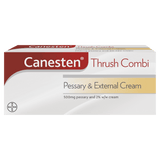
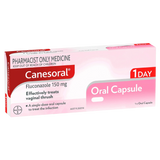

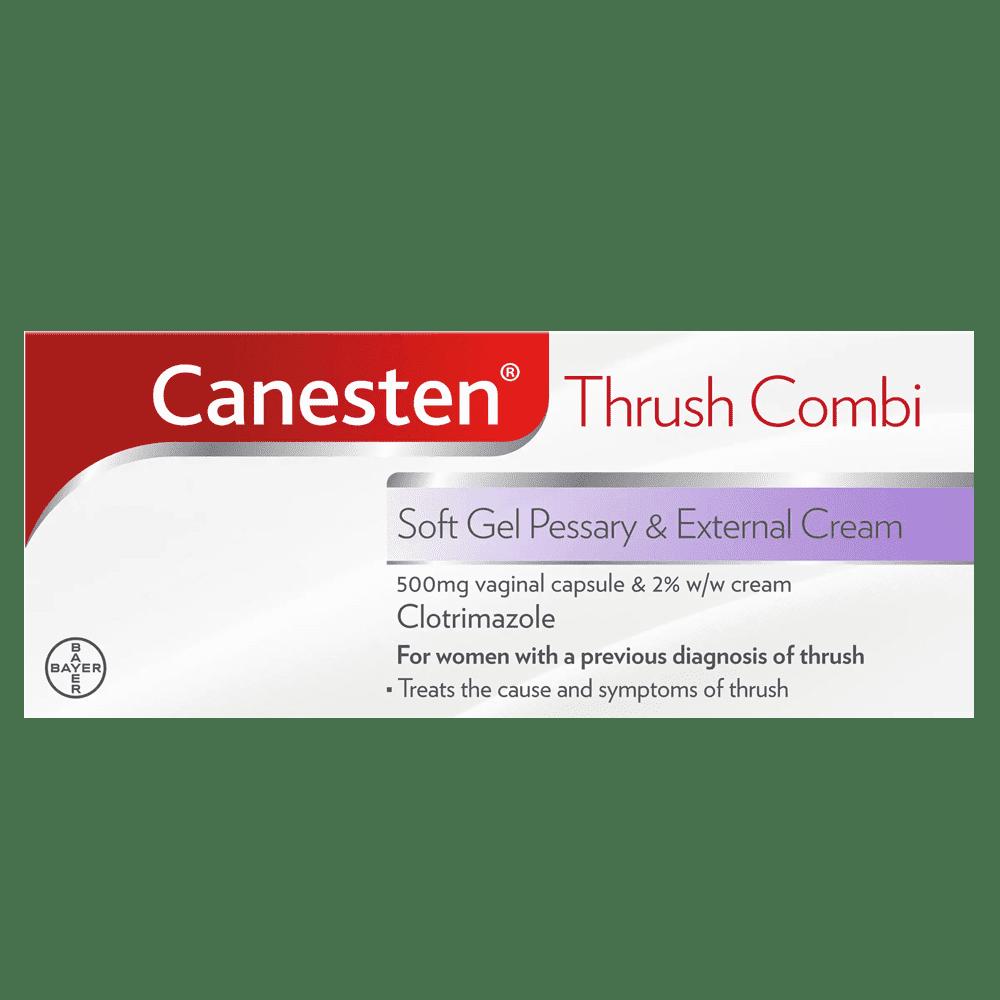
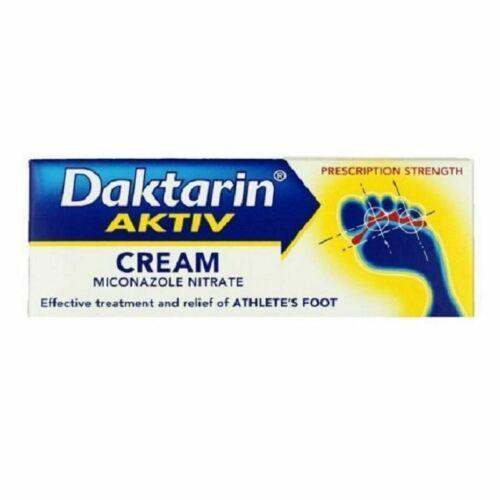
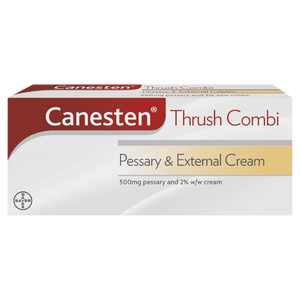
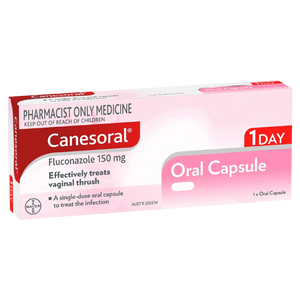






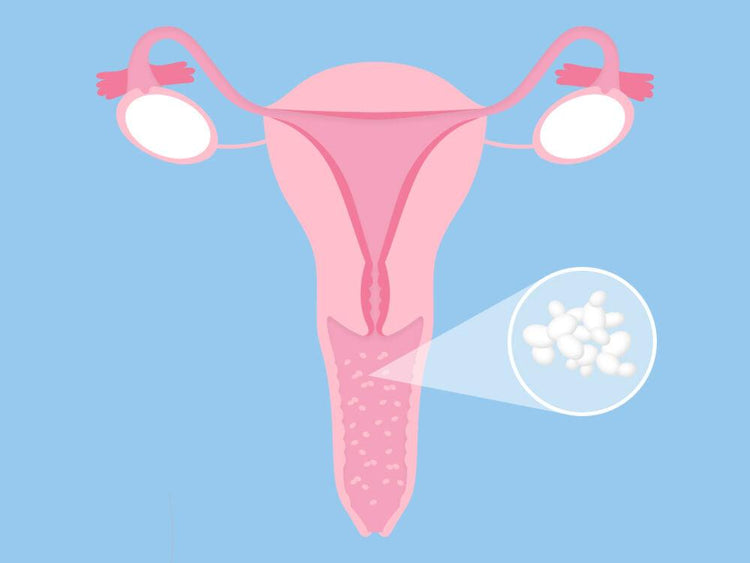


 Rated Excellent by 26,523+ Reviews
Rated Excellent by 26,523+ Reviews